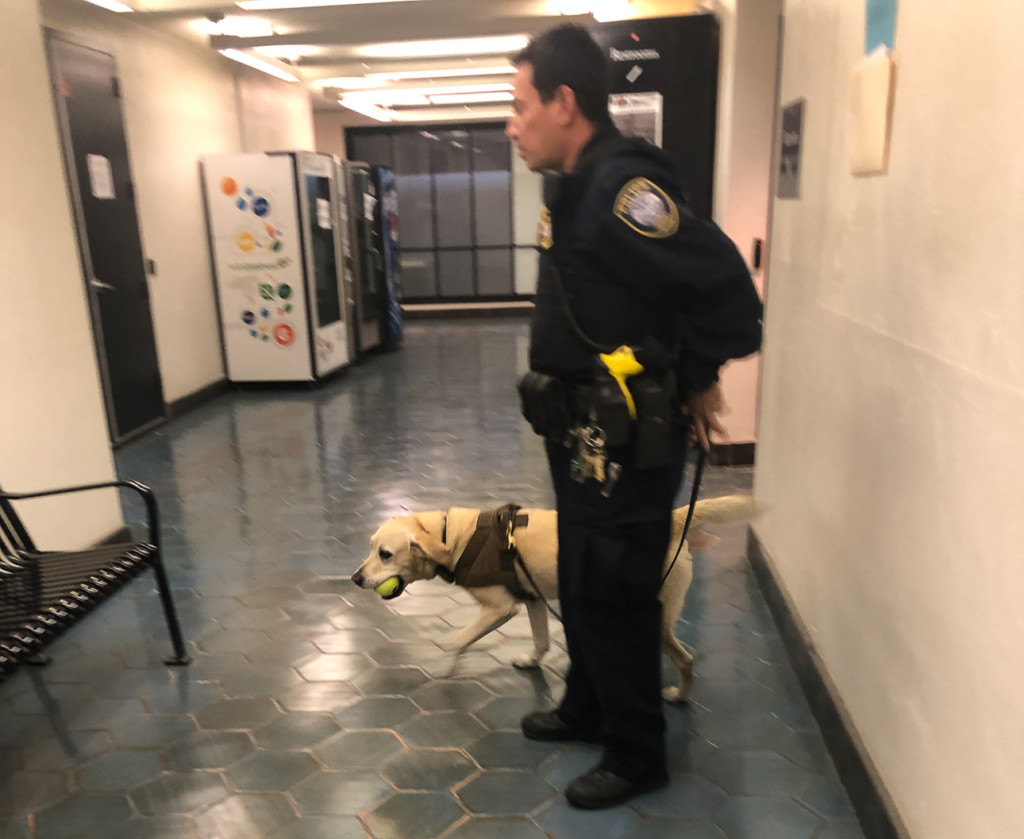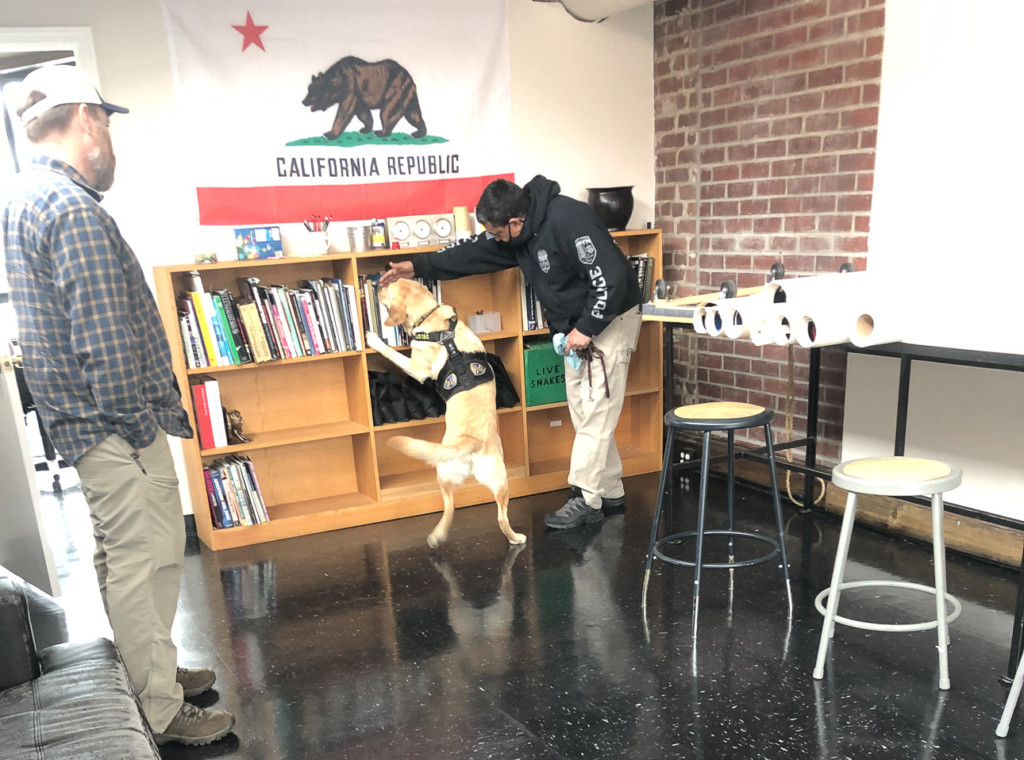By Kirsten Coachman
In case of a real-time emergency, man’s best friend just might be the one to rescue us.
Since the end of February, local public safety agencies, including the San Francisco Fire Department (SFFD), have held their K-9 training sessions at various Academy of Art University locations. As community allies, this partnership came to be after the SFFD expressed a need for space to conduct their month-long training sessions. With swift approval from Academy President Dr. Elisa Stephens, the university opened its doors to SFFD and their K-9 partners, with assistance from Vice President of Campus Safety and Lab Resources Mike Petricca and his staff members.
“These trainings allow us to build relationships that are critical to the success of Campus Safety,” said Petricca. “Firefighters and law enforcement from the Bay Area are now educated on properties and the mission of the Academy.”

The training sessions are a part of the K-9s’ ongoing training for various local, state, and federal public safety agencies.
“It’s like when you learn to ride a bicycle, and then you want to be a BMX expert, and then you want to be one of those people that can do amazing tricks on a mountain bike and go up and down hills,” explained SFFD Lt. Jonathan Baxter. “That’s the level that we’re bringing these dogs to. They’ve learned how to ride the bike; now we’re teaching them how to go the next step.”
Part of that next step means preparing and training the K-9s—whose breeds range from Cocker Spaniel and Labrador Retriever to Malinois and German Shepherd—to be able to track down a suspect or locate a victim within a building if need be. Utilizing Academy buildings allows the K-9s to interact with one another and become acclimated with going into different environments, encountering both different smells and people.
“Say there was an active shooter around the place, and law enforcement agencies were trying to find the suspect. We may send the police K-9 in to find the suspect, and the K-9s can actually search for the person,” said Lt. Baxter. “One of the things we did at the Academy [was] a search and hold. The dog will find a suspect, but not bite the suspect, just [signal], ‘Hey, they’re in this room.’”

Due to the number of rooms in Academy buildings such as The Cannery, the K-9 teams could hide a person in one of the rooms and then send a K-9 into the building to search for them during this training exercise. In a real-life situation, when a K-9 has indicated that they have located a person— “whether it’s a suspect or a victim”—behind a door, Lt. Baxter explained that the public safety entity on the scene would give orders for that person to slowly exit the room they are in.
“That’s how we’re locating somebody,” he said, explaining that it helps to reduce potential injury and has—and will again—save lives.
This search and hold technique can also be used in other potentially life-threatening events, such as the occurrence of a natural disaster. “There’s a lot of areas that we’re training for specifics that can actually be outside the box during a major disaster.”
For training sessions, like the one recently held at The Cannery and other Academy buildings to be successful, public service agencies need a good amount of space to work with. This pre-training/planning time lends itself to strengthening agencies’ responses in the event of a natural or man-made disaster.

“[H]aving a building such as the multiple Academy of Art buildings that they’re providing to us is enhancing our overall abilities,” said Lt. Baxter, “for the fire department and law enforcement entities to practice, train, see what works, and provide these K-9s with the environment for them to succeed in during the real emergency.”
During these training sessions, members of the Academy’s Campus Safety Department have been on hand to assist with any of the agencies’ needs. As an additional benefit, these training exercises also prepare the multiple participating departments’ K-9 teams to work with the building’s staff if a K-9 team is utilized during a potential on-campus emergency.
“My staff had a great time showing the K-9 officers our unique buildings. The K-9 [teams] were impressed by the talent of our student artwork,” said Petricca. If there ever is an emergency on campus, [our public safety partners] are now very cognizant of what is in our buildings and they can respond accordingly.”
“The Academy helps us hide the items, navigate the buildings, and serves as a liaison with the teams,” said Lt. Baxter. “This also serves as a training aid—if the Academy needs a K-9 response, their staff now knows what his or her role will be and what to expect from us.”
